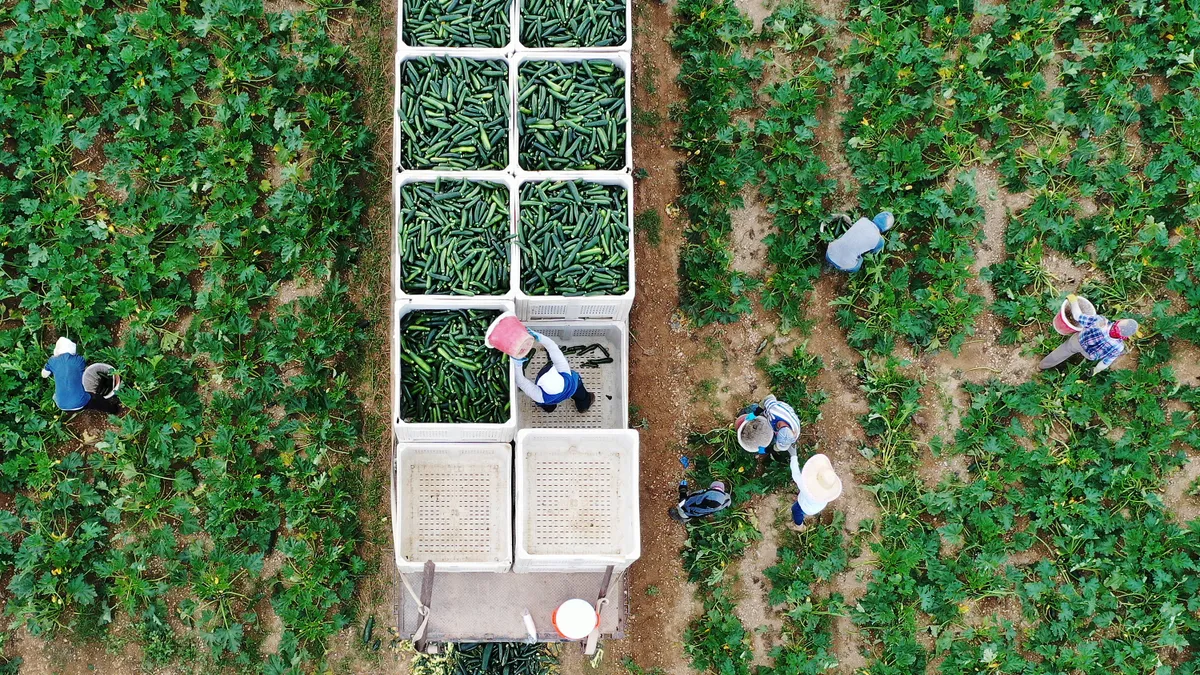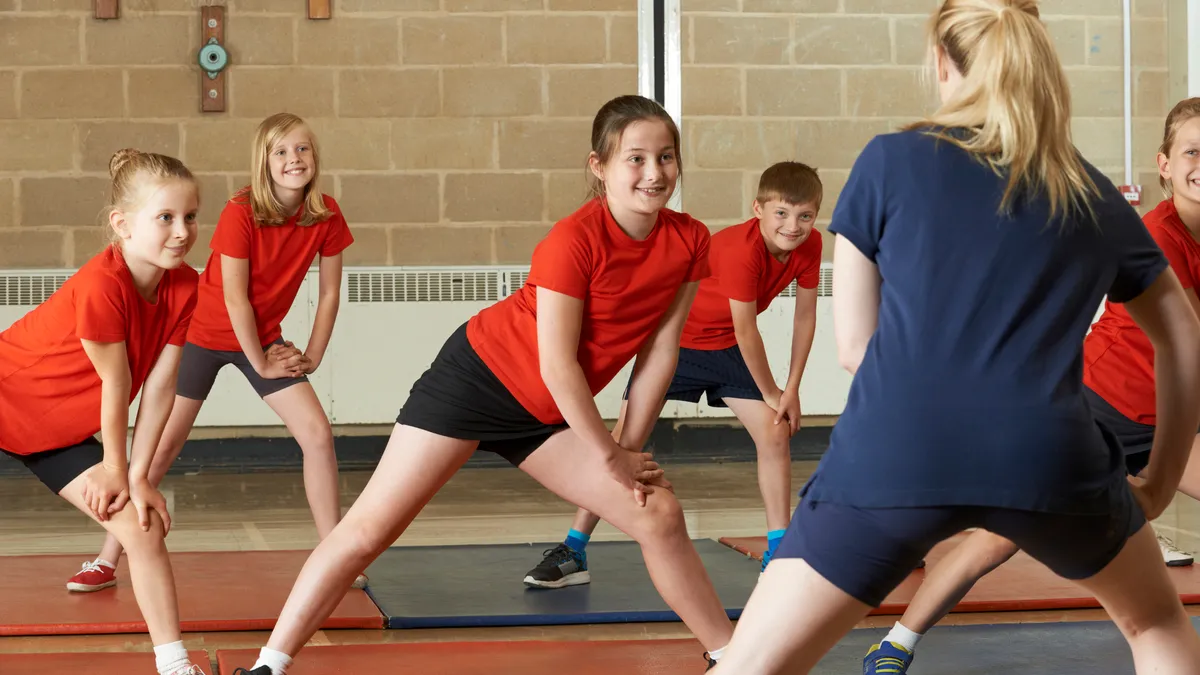At the STEAD School in Commerce City, Colorado, students don't just learn about climate change and its effect on farming — they’re tilling the soil themselves.
The 2-year-old charter high school includes a one-acre farm that “truly was dust,” said Christian Holmes, the school’s director of innovation and technology. In went compost and beehives, and students are simultaneously learning how climate change and seasons impact crop growth — particularly in the hot Colorado summers.
The school’s mission — to teach students about food, plants and animal sciences — is in response to the state's large and growing agricultural industry, Holmes said. Educators want students who, if they choose, can become part of that expanding field amid global environmental changes.
“From the educator's point of view, I don’t see what could be more important than teaching students at this stage in human existence how to be adaptable,” he said.
As water issues plague the West — from scarcity to floods — and wildfires stress the earth, agricultural science programs are adapting how they teach. From newer technologies to the environmental impact of cattle ranching or global food shipments, educators are preparing students for the climate changes expected ahead.
Cattle and the environment
With a project-based learning environment, STEAD school students are asked “big questions,” said Holmes. The school is adding a grade every year, so the current crop of 9th and 10th graders recently worked through a cycle that asked them to consider where humans should get their protein in the future. Every day, pupils learned details to help them answer that question through a scientific, environmental and social studies lens.
The project also examined the impact of large-scale cattle ranching. That includes talking about the food cattle eat, the space they take up, the methane they excrete and even the ethics of whether the animals are emotionally affected. If one disappears, do the others notice?
Classes also considered the impact of replacing beef and ending cattle ranching. What would be the environmental impact on water and land from that replacement protein?
“Is just banning meat the answer, or are the environmental impacts worse?” Holmes said. “I can’t think of a single project [at the school] that doesn’t think of natural resources.”
Hydroponics and aeroponics
New technologies are working their way into agricultural practices and curriculum.
At the STEAD school, students spend time in a large greenhouse, primed with a hydroponic system, which replaces soil with a nutrient-rich water-based environment.
Classes also have rugged laptops, built heavier and bulkier for outdoor use so they can resist being dropped or sprayed with water. Linked to sensors in the soil, the computers can measure ground moisture and even pH levels.
At New York Agriculture in the Classroom — a partnership of Cornell University, the state Department of Agriculture and Markets, the state Education Department, Cornell Cooperative Extension, and the New York Farm Bureau — teachers learn how to weave food and agricultural programming into instruction.
That includes lessons on hydroponic and aeroponic systems, the latter of which leave the roots of plants hanging in the air to be watered via misting sprays. This system allows more plants to grow, as they can be planted in vertical columns rather than horizontally.
Katie Carpenter, the program's director, said it offers about 20 grants a year to schools for three aeroponic towers plus training on how to use them. Students can then grow fresh food for their classrooms. The program has given out close to 300 towers across New York, she said.
“It is a great way to extend the growing season from seed to harvest,” Carpenter said of the towers. “Students get ownership of trying something new, such as fresh greens, for the first time.”
Carbon emissions
At Reynoldsburg High School in Reynoldsburg, Ohio, the carbon emissions are a “huge” piece of agriculture and food science curriculum, said teacher Trevor Horn.
A former chef turned educator, Horn has students look across the entire food landscape, from the ecological impact of pollutants to food chemistry to the way carbon changes are affecting Earth. Horn also has his agriculture and food science classes look at the difference between emissions that can appear from one season to the next.
“It’s pretty clear the more greenhouse gasses, the warmer the earth is growing," he said.
The school has built 14 raised beds across an old tennis court and added a greenhouse. Students help raise crops from winter rye to clover and test the soil nutrition.
When the snow begins to fall in the winter, crops are folded over to prevent them from going to seed, as plants are rotated in the beds every year. Classes may also jar what they raise, as they did with a crop of tomatoes. Other crops are planted for cross-pollinating experiments such as one that looked at which pepper may be more dominant among crops of cayenne, habanero and scorpion peppers. (Hint: it’s usually cayenne.)
In between, there are fun projects that include making yogurt or fudge and looking at how sugar crystals break down during cooking. Students have also worked on food truck concepts, coming up with a product and menu and then pricing them out.
But climate change as a thread is prevalent throughout the program, which ends in a capstone project. Ultimately, the goal is for students to consider how choices about what people eat — and what farmers raise and grow — impact the environment. That includes conversations about eating food not native to their area, such as bananas or chocolate, though those items may be available daily.
“We talk about their carbon emissions and, if they bought food only grown locally, what they wouldn’t have,” he says.
Horn believes programs aiming to educate future farmers and agricultural scientists don’t help if they're not focused on environmental impacts, especially those that may affect local communities.
His goal is for students to graduate understanding the journey taken by the food that has landed on their table, and that they are prepared to be part of changes that need to come ahead.
“The goal is to have students who are knowledgeable about climate change and food facts and stand up,” he says. “Not just because they emotionally connected, but because they have statistics to validate why we need to make that change.”





















